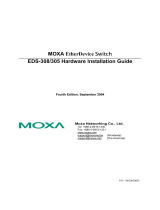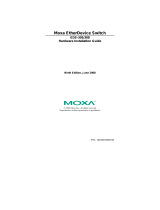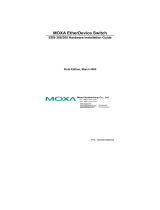
- 14 -
100M
(TP)
GREEN
TP port’s 100 Mbps link is active.
Data is being transmitted at 100 Mbps.
TP Port’s 100 Mbps link is inactive.
100M
(FX)
GREEN
FX port’s 100 Mbps is active.
Data is being transmitted at 100 Mbps.
FX port’s 100 Mbps is inactive.
Auto MDI/MDI-X Connection
The Auto MDI/MDI-X function allows users to connect the
EDS-505A/508A’s 10/100BaseTX ports to any kind of Ethernet device,
without needing to pay attention to the type of Ethernet cable being used
for the connection. This means that you can use either a straight-through
cable or cross-over cable to connect the EDS-505A/508A to Ethernet
devices.
Fiber Ports
The fiber ports are factory-built as either multi-mode or single-mode
SC/ST connectors. Therefore, you should use fiber cables that have
SC/ST connectors at both ends. When plugging the connector into the
port, make sure the slider guide is positioned to the right side such that it
fits snuggly into the port.
Specifications
Standards IEEE802.3, 802.3u, 802.3x, 802.1D,
802.1w, 802.1Q, 802.1p, 802.1X,
IGMPv1/v2, GVRP, SNMPv1/v2c/v3,
DHCP Server/Client, BootP, TFTP, SNTP,
SMTP, RARP, GMRP, LACP, RMON, HTTP,
HTTPS, Telnet, Syslog, DHCP Option
66/67/82, SSH, SNMP Inform,
Modbus/TCP, LLDP, IEEE 1588 PTP, IPv6
MIB-II, Ethernet-Like MIB, P-BRIDGE
MIB, Q-BRIDGE MIB, Bridge MIB, RSTP
MIB, RMON MIB Group 1,2,3,9
Forwarding and Filtering Rate





















